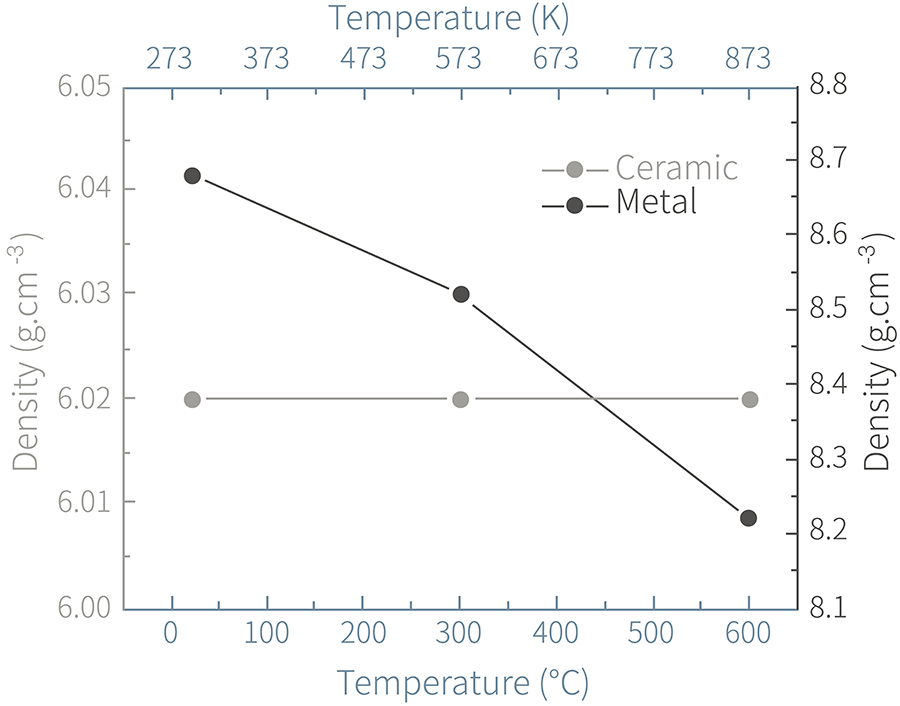Density Measurement
Data from a pycnometer for density measurements on the pristine sample (Brass and Zirconia) and degraded samples kept at 300 °C and 600 °C.
The ceramic samples maintained a consistent density measurement for the pristine and degraded (300 °C and 600 °C) samples. This behavior is expected by the Zirconia due to the electrovalent bonding of the material lending to its chemical and structural stability.
Zirconia based materials are considered as some of the most stable oxides and have even been shown to gradually decompose at elevated temperatures close to 1700 °C. Therefore, exploiting the ceramic centerpost for high temperature applications can be a wise choice, although the composition of the sintered

Scanning Electron Microscopy
■Figure 3
Left side shows metal samples of pristine and 600 °C and the right side shows ceramic pristine and 600 °C
Figure three shows the high-resolution imaging of the polished and etched pristine and degraded samples. As can be seen, there is no evidence of the degradation in the ceramic samples (right hand side images). The samples have the same physical structure which lends to the stability of the ceramic sample at high temperature. On the other hand we see an extreme change in surface morphology on the degraded brass samples. The surface of the brass sample is degraded showing heavy oxidation. The physical formation of the oxide layer likely also contributed to the change in density of thebrass sample.

